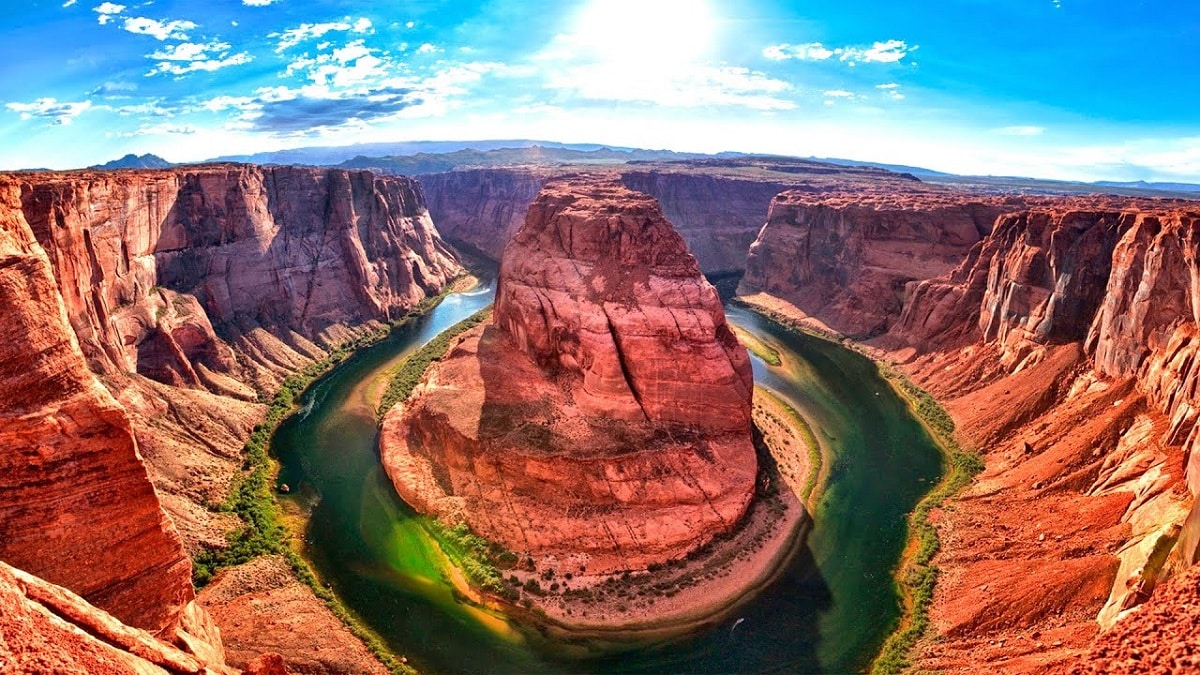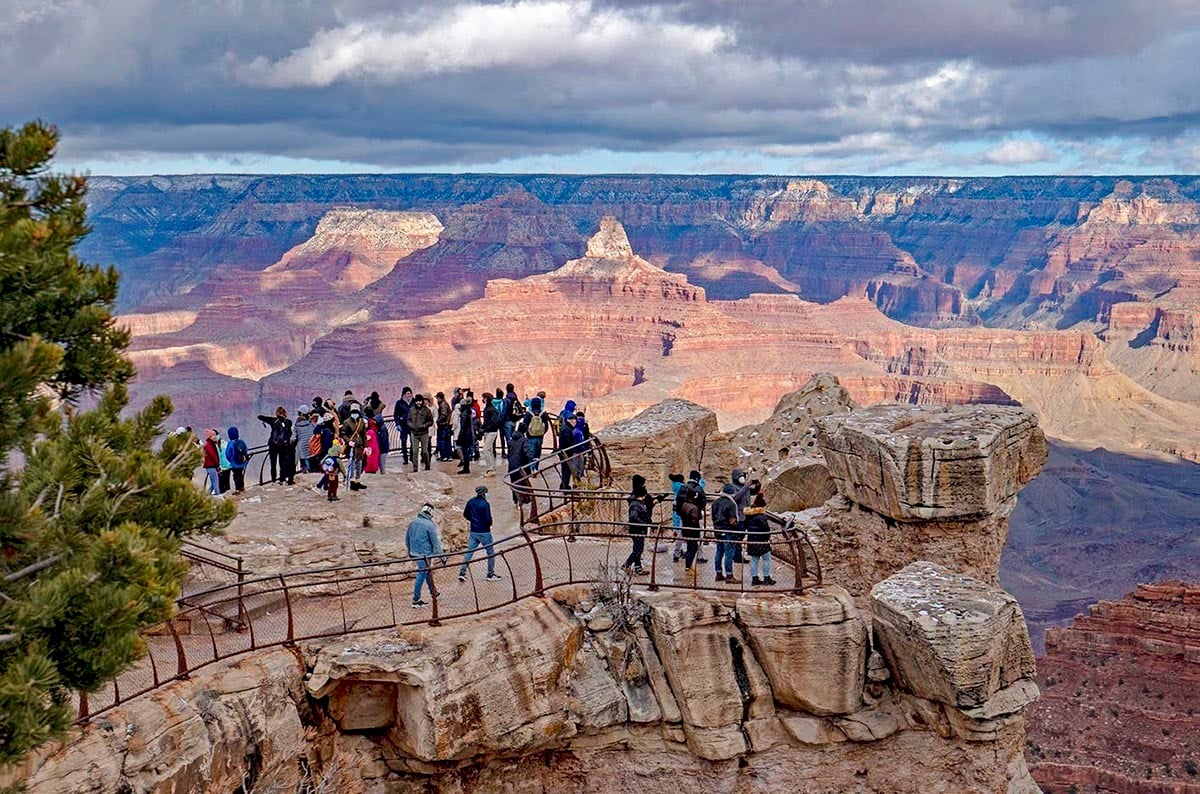
The Grand Canyon of Colorado is an incredible canyon formed by the Colorado River in northern Arizona over millions of years. It is one of the most visited places in the country and is one of the seven natural wonders of the world. Not surprisingly, it was declared a World Heritage Site by UNESCO in 1979. However, despite its indisputable popularity, there are many interesting facts that we are sure you do not know. There's a lot curiosities of the Colorado Canyon that not everyone knows.
For this reason, we are going to dedicate this article to tell you about the main curiosities of the Colorado Canyon and some of its most attractive features.
What is the Colorado Canyon?

The Grand Canyon of Colorado is a natural landscape formed on the southwest coast of the United States. It is the bed of the Colorado River that has left this wonderful landscape for millions of years. The rapids of the Colorado River currents erode the rocks, gradually increasing the depth and width of the "canyon."
Let's understand each other, the high-speed waterway has been penetrating deep into the river bed, making it deeper and wider, and this natural wonder comes into view. In 1979, UNESCO declared the site a World Heritage Site.
The Colorado Canyon, as we know it today, has a total length of 446 kilometers and a maximum height of 1500 meters in relation to the bottom of the canyon. What we commonly call the Grand Canyon of Colorado is only a part of it from inside the Grand Canyon National Park.
Curiosities of the Colorado Canyon

Who was the first European to see the Grand Canyon?
The first European to see the Colorado Canyon was the explorer García López de Cárdenas, who was part of the Coronado Francisco Vázquez expedition. In 1540, under the leadership of the Hopi, he led a small party from the town of Quivira to the Grand Canyon, arriving 20 days later. However, they could not get water from the river, so they returned without going down to the river.
How was it formed and how long did it take?
Scientists believe that it took between 3 and 6 million years to form due to erosion of the Colorado River flowing west at an average speed of 6,5 kilometers per hour. Erosion continues to change the contours of the canyon today.
A 2012 study hypothesized that the Colorado River began its "work" more than 70 million years ago and that the Grand Canyon actually began as a series of smaller canyons. Of course, much of the Grand Canyon didn't begin to form until much more recently.
As magical as it may seem, one of the quirks of the Grand Canyon is that it creates its own weather. Due to sudden changes in elevation, the temperature and precipitation vary depending on where you are in the Grand Canyon.
More than 1000 caves and some inhabitants
One of the wonders of the Grand Canyon are the nearly 1000 caves that they are believed to be within its limits. Only 335 of them have been explored, and one of them is open to the public. There is a small town in the Grand Canyon with 208 inhabitants, which is Supai Village, which can only be reached on foot, by helicopter or by mule.
Its grounds are rich in fossils, including some marine animals dating back more than 1200 billion years. However, there are no dinosaur remains, because the canyon layers formed before there were dinosaurs on Earth.
Dangerous Animals of the Colorado Canyon

Various deadly animals live in different areas of Colorado's Grand Canyon National Park. Among them, the puma or puma, the black bear or the rattlesnake stand out, although it seems that the rock squirrel needs to be more careful, since it is very numerous, attacks indiscriminately, bites and treats the animals, its victims, with ferocity.
One of the endemic animals of the Grand Canyon is the "pink rattlesnake" that inhabits the edge of the park. Their color makes them difficult to detect since it blends in with the rocky bottom of the place.. Interestingly, there is no record of anyone dying from a rattlesnake bite for as long as the national park has existed.
The plane that crashed and no one survived
During the 1950s, it was customary for many commercial airplanes to divert over Colorado's Grand Canyon National Park so passengers could view this natural wonder. In 1956, two planes collided in midair, and no one survived. The accident led to major changes in the regulation of US flight operations and the creation of the FAA in 1958, which later became the FAA, which oversees aviation safety in the country.
Suicide in the Colorado Canyon
The Grand Canyon has been chosen by some as a place of suicide. The most famous cases are that of a 20-year-old man who jumped from a tourist helicopter over the deepest part of the canyon in 2004, or that of Patricia Astolfo, 36, who drove her car to the edge of the canyon and jumped into the void. . Astolfo's car was suspended from a rock ledge, but she continued with her suicide attempt and jumped off the edge of the cliff with her broken down car. However, below six meters, a rock platform prevented his fall.
Severely injured, he managed to roll to the end of the rock and fall, where he died. Throughout the history of the park there have been several cases of people driving to the edge of the Grand Canyon to commit suicide, perhaps following the example of Thelma and Louise in the famous movie, and there are still several unsolved cases, which is why The reason for a special investigative team was established.
I hope that with this information you can learn more about the curiosities of the Colorado Canyon and some of its characteristics.